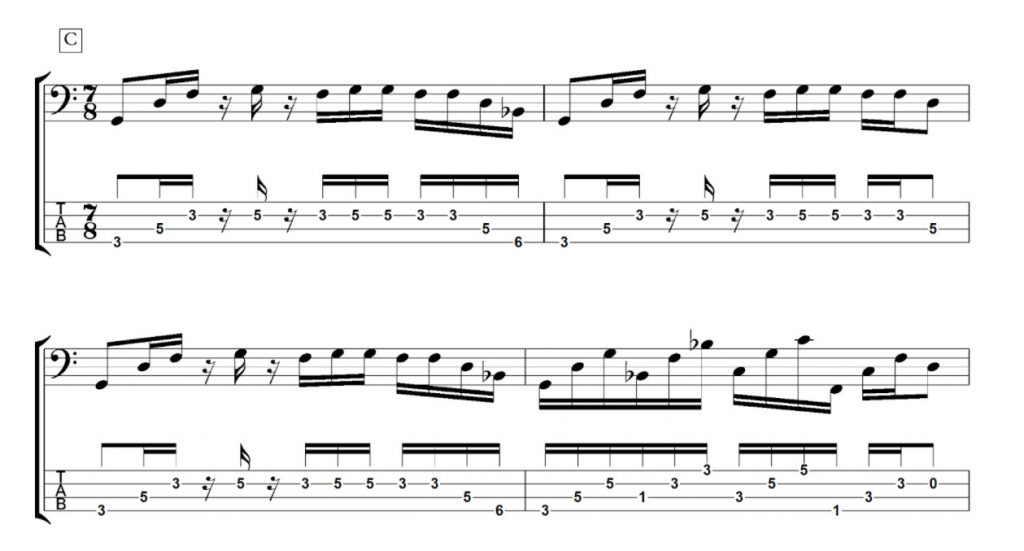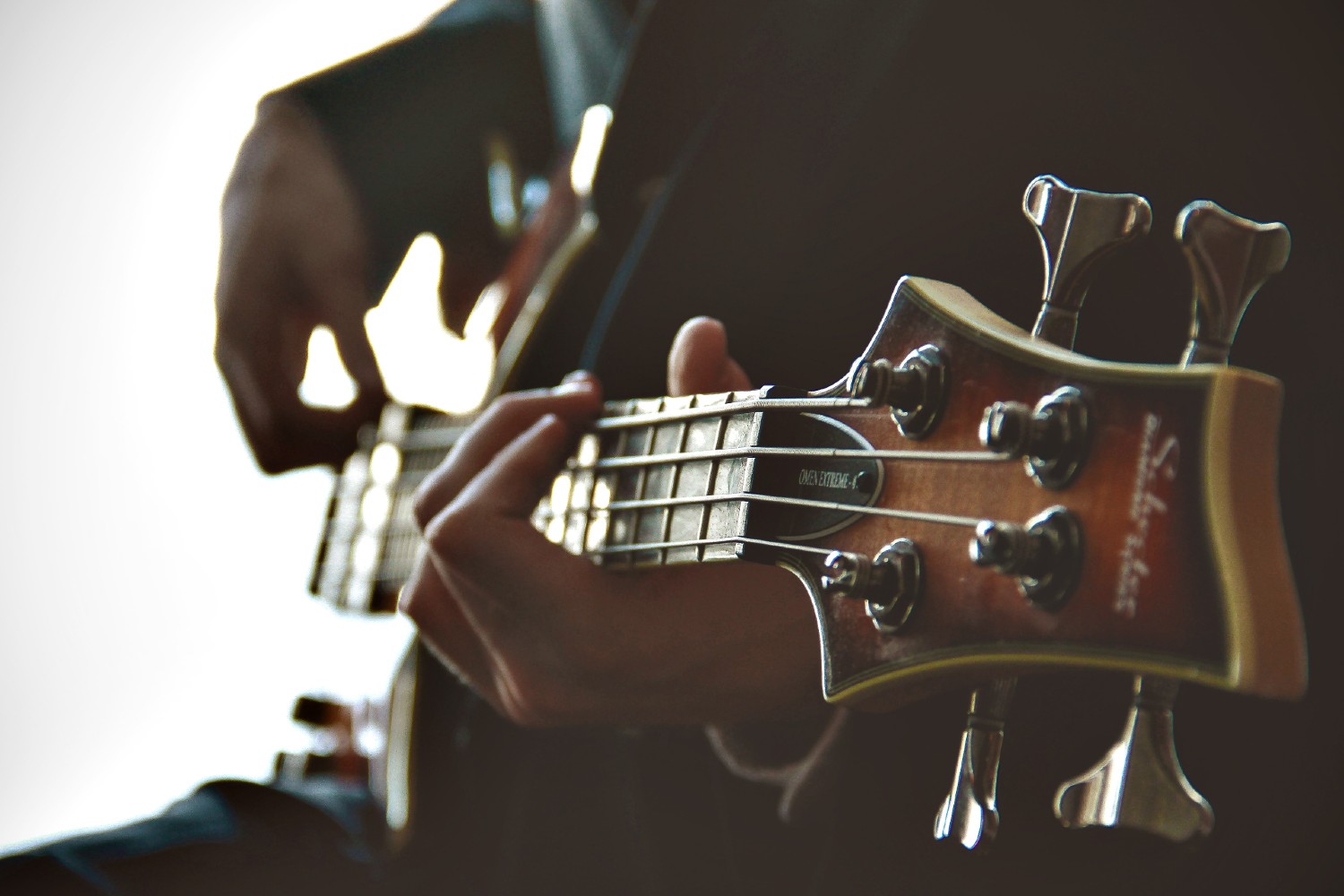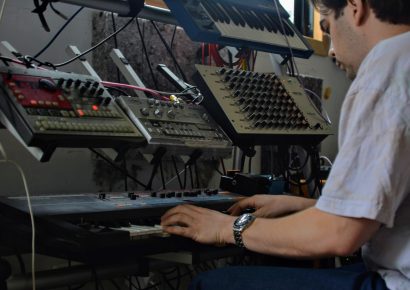Learn all about 7/8 and the like in this bass column.
Want to develop some new ideas? Want to stretch your abilities (and perhaps your drummer’s too!)? Want to work on your independence and time feel? Odd Time Grooves aren’t just fodder for prog rock or modern jazzers. Whilst they might take some time to get your head around if you haven’t experienced them before, they can become just as comfortable as 4/4 (and are more common than 4/4 in many cultures).
Read up on all the latest interviews, features and columns here.
Let’s take a look at 7/8 as a start. This is often felt as two bars of 4 with one less beat in the second group (so 1-2-3-4-1-2-3). It feels like it’s changing early (which it is in comparison to 4/4) but can still really groove. Remember we’re counting each quaver as 1 beat so 1-2-3-4-5-6-7 quavers in a bar.
If we use semi quavers these then become 1+2+3+4+5+6+7+ (*hint – count beat 7 as ‘Sev’, not ‘Se-ven’ which has two syllables. Obvious I know, but you’d be surprised how many people do this and are then actually adding an extra beat!).

Figure A essentially runs through a progression of E-G-A-B and always plays on beat 1 of each bar, a good way to state the time and encourage you to lock into a groove. Bar 1 starts with E on beat 1 and then another tied E note played on the 4+ (remember, 7 quavers in a bar so semi quavers are counted as 1+2+3+4+5+6+7+ like quavers usually are!).
Bar 2 then plays on beat 1, 4+ and 5+ whilst Bar 3 returns to the same rhythm from Bar 1. Bar 4 plays on 1, 3 and 4+ to add some rhythmic variation. Put the metronome on, start slow and get used to playing hearing this groove as a start.

A few more notes and subdivisions (and slightly more syncopated) Figure B could work well with the drummer accenting the root notes (E-G-A-B-D) between the kick and snare. Bar 1 plays on beat 1 and 5, Bar 2 is 1, 4+, 5+, 7+ and Bar 3 plays 1+2, 5+,6+,7+ with the last Bar playing B on 1 and then a tied D on beat 5.

Figure C then gets a little more involved. Filling more of the subdivisions this type of sound can work really nicely with a drummer playing a more simple groove OR them matching your line and accents.
For some, this exercise is easier to read/play as it is busier and has less gaps (it can be easier to read as there are less rests and if you’re subdividing/counting properly 1+2+3+4+5+6+7+ you can see those rests fairly easily!).
Assuming then Bars 1,2 and 3 are cool, Bar 4 again is busy but the groupings of the notes might feel a little different. The first 3 notes G-D-G are the Root/5th/Octave (a power chord in guitarist vernacular) followed by the same voicing on Bb, C and F.
So we’ve got groups of 3 playing across a 7 feel which creates a polyrhythm and almost feels like that lick has momentarily changed time signatures. This can be a great chance for the drummer to move the backbeat and imply another feel. Go slow, put the metronome on…or even better, bash them out with a drummer!
For more bass related content, check out this article about the history of bass told through ten of the best bass players.







